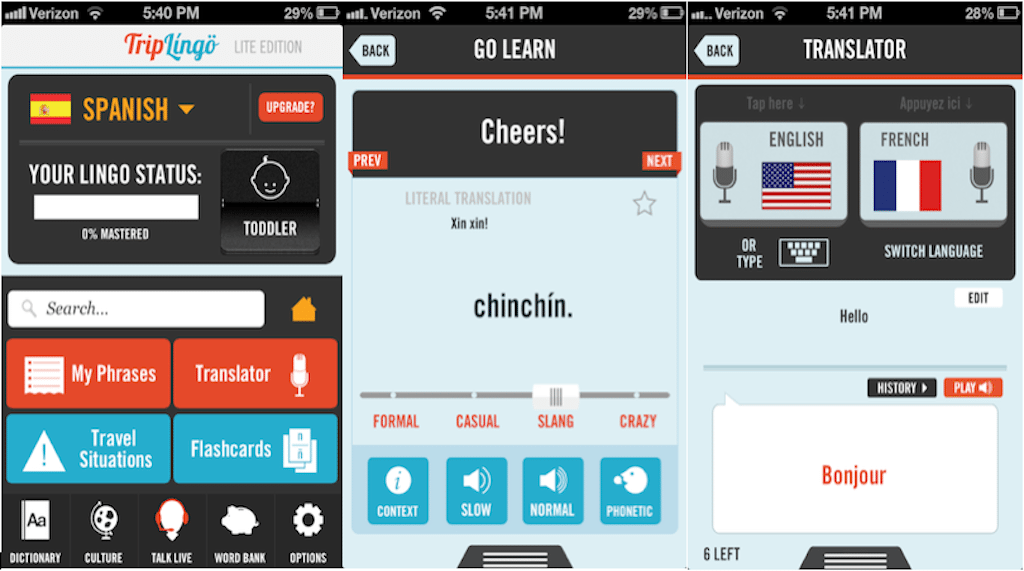Skift Take
TripLingo’s long-term success will come from establishing partnerships with businesses and booking agencies to ensure the technology lands in the hands of monolinguists again and again.
Ever boarded a plane without knowing how you’d figure out which bathroom door to go through upon arrival? Or tried to order chicken and end up with steak? Language barriers are one of the biggest stressors for North American travelers, says Carson Wagonlit Travel.
TripLingo aimed to arm travelers with key phrases that are needed to get by in a new country when it initially launched its iOS app more than seven months ago. The company has now stepped up its game with the launch of version 2 on Tuesday.
The new app offers users free content and on-call human translators. Here are the biggest changes to look for in version 2:
Access to free information
The biggest iteration is the payment process for the application. Users originally had to pay $10 to download an individual app for each language. All languages have been combined into one application, which users can now download for free. There are 60 key phrases, 20 voice translations, and a dictionary that users can access for any of the app’s eleven available language.
To access the complete 1,200 + phrases and unlimited voice translations, travelers can purchase packages of one, three, or all eleven languages.
Users can also access the culture guide for free, which contains bulleted lists on general and business etiquette, safety information, travel tips, language notes, and dining.
Voice-to-Voice Translation
Users can speak into their smartphone or tablet in one language and the app will translate the phrase aloud.
Real-life Translation
For more dire situations, users can pay $1 per a minute to access a real translator. The service is power by VerbalizeIt and allows users to speak to a translator with just a few taps. Live translators are currently only available in Hindi, Mandarin, and Spanish.
Finding a voice
TripLingo’s focus on colloquial phrases differentiates it from other language startups like Duolingo and industry veterans like Rosetta Stone. These services attempt to teach users a new language starting with the most basic vocabulary.
TripLingo is designed for a busy tech-savvy traveler that wants to make a good impression greeting their business partners in a foreign language, but doesn’t need to understand the preterite and imperfect verb tenses.
What’s next?
The app was created with both leisure and business travelers in mind; however, TripLingo is launching a business version of the app for corporations that gives their employees full access to all languages.
In addition to the V.2 launch, TripLingo also announced their first $1.1 million round of funding led by BOH ventures. An Android app is expected to launch in mid-January.
The Daily Newsletter
Our daily coverage of the global travel industry. Written by editors and analysts from across Skift’s brands.
Have a confidential tip for Skift? Get in touch
Photo credit: TripLingo released version 2 of its iOS app on Tuesday.
